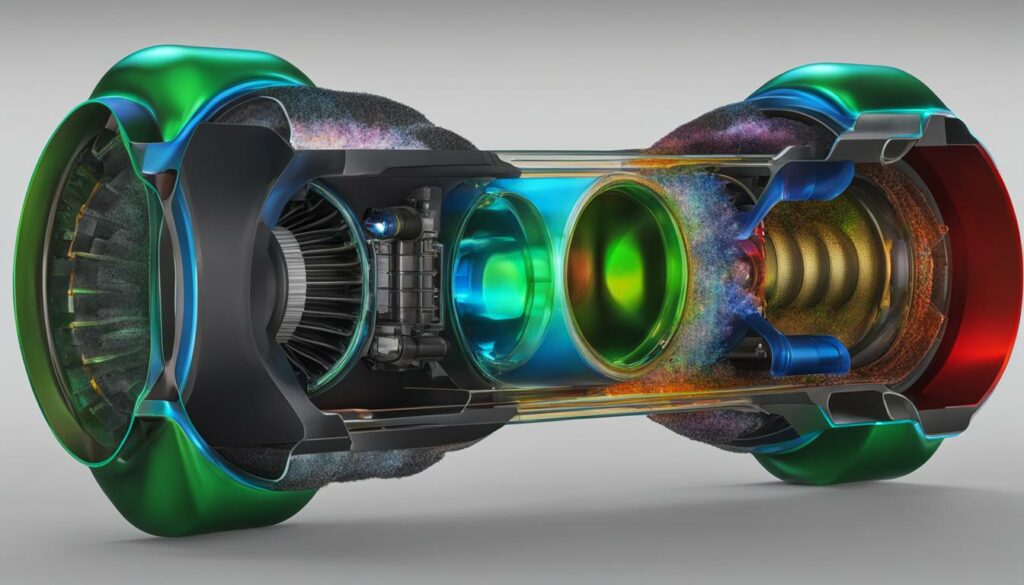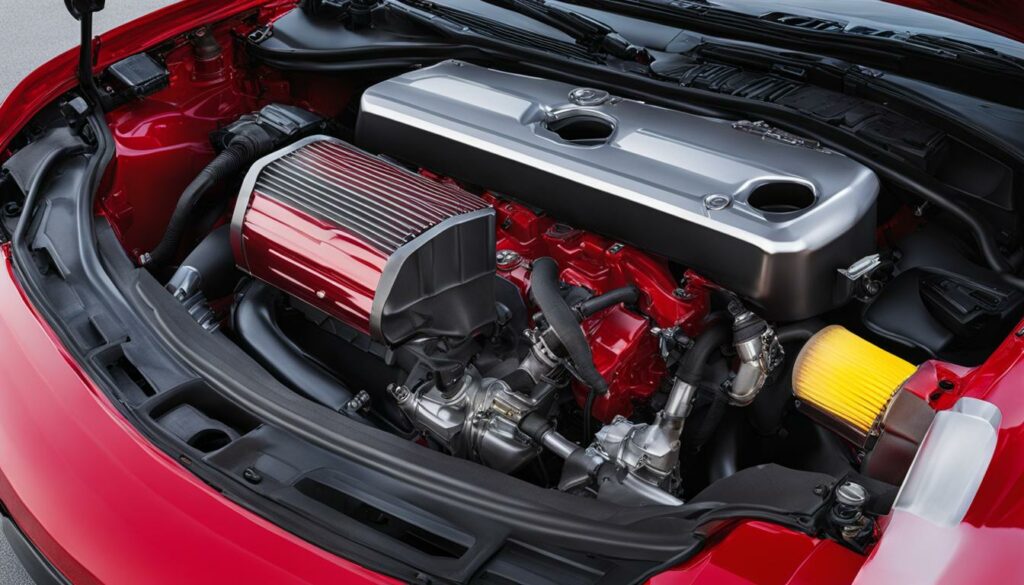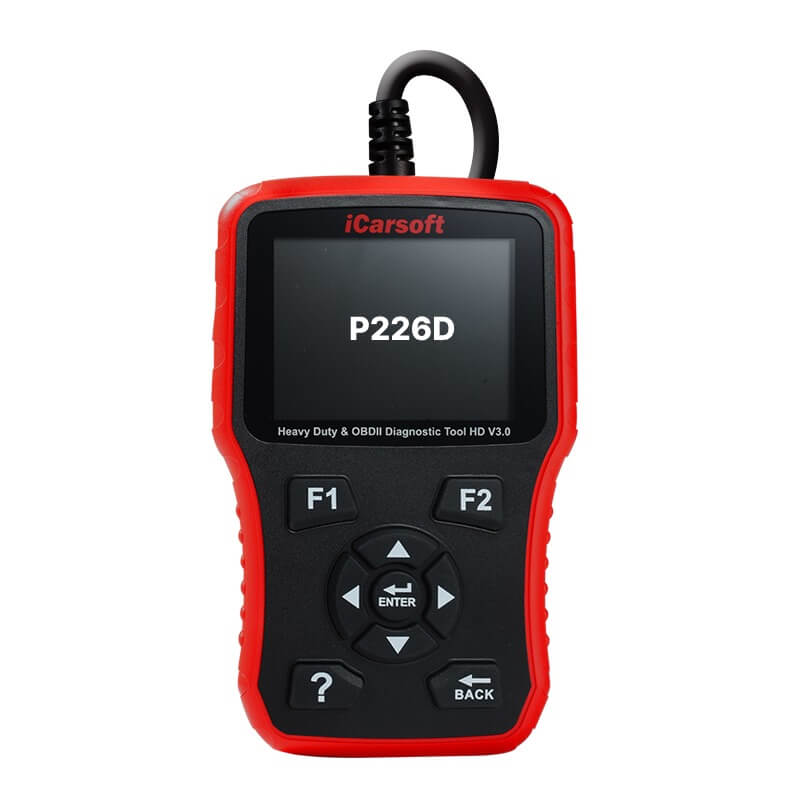P226D – Particulate Trap Reduction Functionality Bank 1
POSTED IN pcodes
The P226D code indicates a problem with the particulate trap reduction functionality in bank 1 of your vehicle’s emission control system. This code specifically relates to the diesel particulate filter (DPF), which is responsible for reducing emissions from the exhaust by trapping and burning off particulate matter.
The code suggests that there may be an issue with the DPF regeneration process, which is the procedure that burns off the trapped soot in the filter.
- The P226D code is related to the particulate trap reduction functionality in bank 1 of the emission control system.
- The code specifically indicates an issue with the diesel particulate filter (DPF).
- DPF regeneration is the process of burning off trapped soot in the filter.
Takeaways>
Understanding the Diesel Particulate Filter (DPF)
The diesel particulate filter (DPF) is an essential component of the emissions control system in diesel vehicles. Its primary function is to trap and remove soot particles from the exhaust gases, playing a crucial role in reducing harmful emissions and improving air quality.
Over time, the DPF can accumulate a significant amount of soot, leading to increased exhaust back pressure. This buildup of soot can have several adverse effects, including triggering fault codes like P226D and negatively impacting engine performance and fuel efficiency.
Buy tested tuning file for Adblue / EGR / DPF / Adblue off now!
To prevent blockage and maintain optimal DPF functionality, regular DPF regeneration is necessary. This process involves burning off the trapped soot particles, allowing the filter to operate efficiently.

The Importance of DPF Regeneration
DPF regeneration is critical to maintaining the effectiveness of the filter. This process prevents soot accumulation from reaching levels that would hinder the proper functioning of the DPF.
During DPF regeneration, the exhaust gas temperature rises, usually through increasing engine load or using an active regeneration system. This higher temperature enables the soot particles to burn off, restoring the DPF’s filtering capabilities.
Regularly scheduled driving with sufficient operating temperatures and proper engine load allows for passive DPF regeneration. However, in some cases, active regeneration may be necessary, initiated by the vehicle’s electronic control unit (ECU).
The Consequences of DPF Blockage
If the DPF becomes excessively blocked due to prolonged periods without successful regeneration, it can have severe consequences for the vehicle. These consequences include:
- Reduced engine performance
- Decreased fuel efficiency
- Inhibited exhaust flow
- Potential damage to other engine components
- Inefficient emission control
The Role of Exhaust Back Pressure
Exhaust back pressure refers to the pressure created by the resistance in the exhaust system. When a DPF becomes clogged, the accumulation of soot and subsequent reduction in the effective filtration area leads to increased exhaust back pressure. This heightened pressure can negatively impact engine performance and emissions, potentially triggering fault codes like P226D.
Understanding the diesel particulate filter and its role in emissions control is essential for maintaining optimal engine performance and complying with environmental regulations.
Common Causes of the P226D Code
The P226D code can have several common causes that trigger the code to appear. Understanding these causes is essential for effective diagnosis and repair. Some of the common causes of the P226D code include:
- Insufficient DPF Regeneration: One possible cause is insufficient regeneration of the Diesel Particulate Filter (DPF), which occurs when driving conditions do not allow the exhaust to reach the required temperature for successful regeneration.
- DPF Pressure Sensor: Another potential cause is a faulty DPF pressure sensor. This sensor may provide inaccurate readings, leading to improper DPF regeneration.
- Faulty Hydrocarbon Injector: A faulty hydrocarbon injector, responsible for injecting diesel fuel into the exhaust for regeneration, can also contribute to the P226D code.
- Clogged DPF: A clogged DPF, resulting from excessive accumulation of soot particles, can restrict the flow of exhaust gases and trigger the code.
- Wiring Issues: Wiring issues, such as damaged or corroded wires, can disrupt the sensor signals and contribute to the code.
- Malfunctioning Exhaust Temperature Sensor: A malfunctioning exhaust temperature sensor may provide inaccurate temperature readings, affecting proper DPF regeneration.
- Software Issues with the Powertrain Control Module (PCM): Software issues with the PCM, the control module responsible for managing engine performance, can cause the P226D code to appear.
Proper diagnosis using a diagnostic scan tool is crucial to pinpoint the specific cause of the P226D code. Once identified, appropriate troubleshooting steps can be taken to address and resolve the issue.
| Common Causes | Description |
|---|---|
| Insufficient DPF Regeneration | Driving conditions do not allow the exhaust to reach the required temperature for successful DPF regeneration. |
| DPF Pressure Sensor | A faulty DPF pressure sensor provides inaccurate readings and prevents proper DPF regeneration. |
| Faulty Hydrocarbon Injector | A faulty hydrocarbon injector affects the injection of diesel fuel into the exhaust for regeneration. |
| Clogged DPF | An excessive accumulation of soot particles clogs the DPF, restricting exhaust flow. |
| Wiring Issues | Damaged or corroded wires disrupt sensor signals, contributing to the code. |
| Malfunctioning Exhaust Temperature Sensor | An inaccurate exhaust temperature sensor affects proper DPF regeneration. |
| Software Issues with the PCM | Software issues with the Powertrain Control Module cause the code to appear. |
Symptoms of the P226D Code
The P226D code can manifest in various symptoms, indicating potential issues with your vehicle’s particulate trap reduction functionality. If you encounter any of the following symptoms, it is essential to address them promptly to avoid further damage and ensure optimal engine performance:
- Illuminated dashboard warning lights: One of the most common symptoms associated with the P226D code is the illuminated check engine light or other dashboard warning lights. These lights serve as an alert to a potential problem in the vehicle’s emission control system.
- Derated mode or “limp” mode: When the P226D code is triggered, your vehicle may enter a derated mode. This mode refers to a condition where engine power and performance are significantly reduced to prevent potential damage. You may experience sluggish acceleration and a decrease in overall driving performance.
- Overheated DPF housing and exhaust components: Another potential symptom of the P226D code is an overheated diesel particulate filter (DPF) housing or other exhaust components. The excessive heat can indicate an issue with the DPF regeneration process or potential blockage in the filter.
It is important to address these symptoms promptly to avoid further damage and maintain compliance with emission standards. Consulting a professional mechanic or using a diagnostic scan tool to identify and diagnose the specific cause of the P226D code is recommended.
Proper diagnosis and repair can help resolve the underlying issue and restore your vehicle’s performance and efficiency.

Comparison of Symptoms
| Symptoms | Associated Risks |
|---|---|
| Illuminated dashboard warning lights | Potential engine damage if ignored; increased emissions |
| Derated mode or “limp” mode | Reduced engine power and performance; compromised driving experience |
| Overheated DPF housing and exhaust components | Potential DPF damage; increased risk of fire; compromised emission control |
Diagnosing and Fixing the P226D Code
When faced with the P226D code, it is important to undertake a thorough diagnostic process to identify the underlying cause and implement the appropriate fix. A diagnostic scan tool is typically employed to retrieve the specific fault code and gather essential information necessary for accurate diagnosis.
If you are not well-versed in vehicle diagnostics and repair, it is highly recommended to seek professional assistance. Automotive experts have the expertise and experience to efficiently diagnose and repair the issue. Their professional guidance ensures a precise diagnosis and proper resolution, saving you time and potential frustration.
If professional assistance is not readily available, you may consider an alternative solution – permanent removal of the Diesel Particulate Filter (DPF). This process involves uploading the Engine Control Unit (ECU) file to a dedicated portal. However, it is crucial to note that DPF removal or tampering with emission control systems may be illegal in some regions. Violating regulations can result in penalties or vehicle registration issues. Therefore, it is vital to consult local regulations and seek professional advice to ascertain the legality and consequences of DPF removal in your specific jurisdiction.
List of Steps for Diagnosing and Fixing the P226D Code:
- Connect a diagnostic scan tool to the vehicle’s OBD-II port.
- Retrieve the P226D code and additional fault codes if present.
- Research and analyze the specific fault code and its possible causes.
- Inspect the DPF pressure sensor, wiring connections, and related components.
- Perform a thorough assessment of the DPF regeneration system.
- Check the hydrocarbon injector for faults or malfunctions.
- Verify the condition of the DPF for blockages or excessive soot accumulation.
- Examine the exhaust temperature sensor for proper functionality.
- Analyze the powertrain control module (PCM) software for potential issues.
- Take appropriate corrective action based on the diagnosis.
By following these diagnostic steps and seeking professional assistance when necessary, you can effectively diagnose and fix the P226D code, ensuring optimal engine performance and compliance with emissions control standards.
Remember, it is crucial to prioritize the preservation of emission control systems and adhere to local regulations to minimize environmental impact and avoid legal consequences.
Conclusion
The P226D code signifies a specific issue with the particulate trap reduction functionality in bank 1 of the engine’s emission control system. This code is closely associated with the diesel particulate filter (DPF), a critical component responsible for reducing emissions from the exhaust by trapping and burning off particulate matter.
If left unaddressed, the P226D code can lead to decreased engine performance and increased emissions. Therefore, it is crucial to comprehend the functioning of the DPF and its role in emissions control. Common culprits behind the P226D code include insufficient DPF regeneration, a faulty DPF pressure sensor, and a faulty hydrocarbon injector.
Recognizing the symptoms associated with the P226D code, such as dashboard warning lights, derated mode, and overheated DPF housing, enables prompt intervention. Employing proper diagnostic procedures and following the necessary repair steps are essential for resolving the issue and ensuring optimal engine performance while remaining compliant with emissions standards.
FAQ
What does the P226D code mean?
The P226D code indicates a problem with the particulate trap reduction functionality in bank 1 of your vehicle’s emission control system. It specifically relates to the diesel particulate filter (DPF) and can result in reduced engine performance and increased emissions if not addressed promptly.
What is a diesel particulate filter (DPF)?
The diesel particulate filter (DPF) is an important component of the emissions control system in diesel vehicles. Its role is to trap and remove soot particles from the exhaust gases, reducing harmful emissions and improving air quality.
What are the common causes of the P226D code?
Common causes of the P226D code include insufficient DPF regeneration, a faulty DPF pressure sensor, and a faulty hydrocarbon injector.
What are the symptoms of the P226D code?
Symptoms of the P226D code include dashboard warning lights, entering a derated mode (where engine power and performance are significantly reduced), and an overheated DPF housing.
How is the P226D code diagnosed and fixed?
Diagnosing and fixing the P226D code typically requires the use of a diagnostic scan tool to retrieve the specific fault code and identify the underlying cause. It is recommended to seek professional assistance for accurate diagnosis and repair. Alternatively, DPF removal can be considered, but this may be illegal in some regions and can result in penalties or vehicle registration issues.
What should I do if I have the P226D code?
If you have the P226D code, it is important to address it promptly to ensure optimal engine performance and compliance with emissions standards. Consult a professional for accurate diagnosis and repair.
Why is it important to address the P226D code?
Addressing the P226D code is important because it indicates a problem with the particulate trap reduction functionality in your vehicle’s emission control system. Ignoring the code can lead to reduced engine performance, increased emissions, and potential damage to the vehicle.
Can I fix the P226D code myself?
Fixing the P226D code typically requires professional assistance, especially if you are not familiar with vehicle diagnostics and repair. It is recommended to seek expert help to accurately diagnose and repair the issue.


